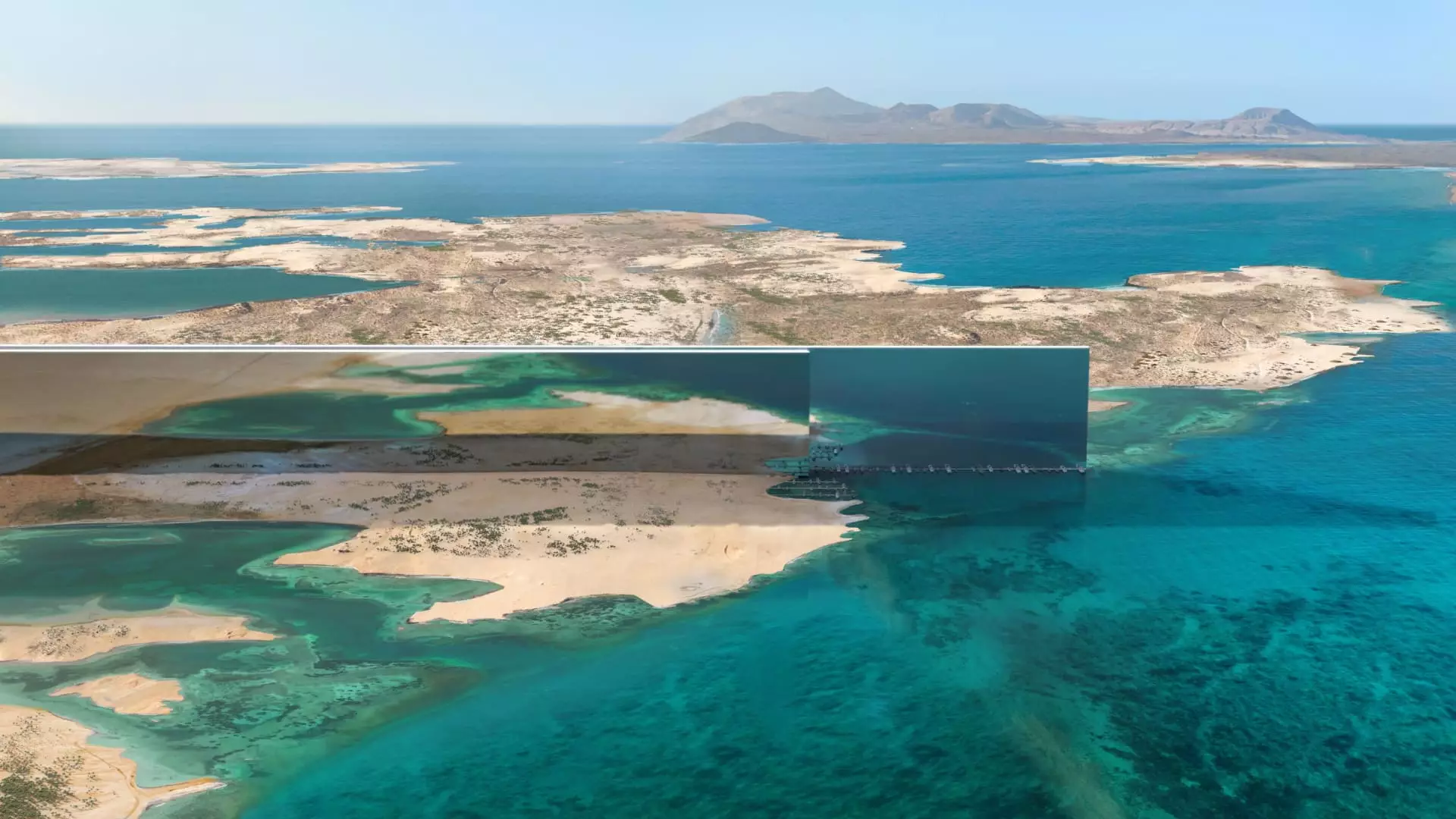Saudi Arabia’s ambitious NEOM project, particularly its flagship The Line, has long been portrayed as a revolutionary leap into the future. With promises of a futuristic city stretching over 105 miles—an urban marvel designed to house nearly 9 million residents—the project embodies the kingdom’s desire to redefine its global image and economic landscape. Yet beneath this veneer of innovation lies a troubling reality: the project’s viability is increasingly questioned amid economic headwinds and internal doubts about feasibility. The recent decision to reevaluate NEOM suggests that what once seemed inevitable—Saudi Arabia’s irreversible march towards a technological utopia—may now be unwinding amidst financial strains and shifting geopolitical priorities.
The grandiosity of NEOM’s plans is matched only by their astronomical price tag, estimated to exceed $1.5 trillion. Such a staggering figure exposes fundamental questions about whether the kingdom can sustain this level of investment, especially as oil revenues—the primary driver of its economy—continue to decline. The recent dip in global oil prices, hovering around $70 per barrel, underscores a fragile economic foundation that threatens to derail long-term megaprojects that hinge on buoyant energy markets. As the world shifts away from fossil fuels, Saudi Arabia must grapple with the uncomfortable reality that its reliance on oil income is not as sustainable as once thought. The reassessment of The Line signals perhaps a pragmatic recognition that the project’s original scope might be overly optimistic in an era of economic uncertainty.
Strategic Reassessment: Facing Reality or Failing Ambition?
In recent weeks, the Saudi sovereign wealth fund responsible for NEOM has enlisted consulting firms to conduct in-depth reviews of The Line’s feasibility. While these “strategic checks” are routine in complex mega-developments, their timing and implications are anything but routine. They reflect a cautious realignment of expectations—an acknowledgment that the initial blueprint may have overestimated technological capabilities and underestimated financial constraints.
Critics argue that the project’s initial plans were driven by a palpable hubris, inflated by overly optimistic forecasts that prioritized revolutionary architecture and cutting-edge technology at the expense of pragmatic planning. Insiders have reported a tendency within NEOM’s management and advisory teams to pander to lofty visions rather than confront practical hurdles. This “yes-man” culture threatens to saddle the project with inflated costs and unrealistic timelines, and the ongoing review could serve as a much-needed reality check—or, worse, a sign of fundamental flaws that threaten its existence altogether.
The implications of this are profound. If NEOM’s leadership chooses to scale back or delay plans, it signals a strategic retreat rather than a pivot. A scaled-down version, perhaps focusing on select technological hubs rather than sprawling urban extensions, would be a more realistic approach—though one that could diminish the project’s global prestige and economic potential. The key question is whether Saudi Arabia’s leadership is willing to accept this diminished vision or if it will double down in hopes of salvaging the original dream.
The Political and Economic Stakes: Can the Kingdom Reconcile Vision with Reality?
Saudi Arabia’s Crown Prince Mohammed bin Salman and his government have tethered their political legitimacy to bold visions like NEOM. The project is more than just infrastructure; it’s a symbol of a new Saudi Arabia—modern, innovative, and future-ready. Yet, the current climate presents a paradox: the very economic realities that threaten NEOM’s future might also test the political will of its architects.
The kingdom has historically showcased resilience in the face of economic volatility, often prioritizing long-term projects to diversify its economy and generate employment for its swelling youth population. However, the current fiscal tightening, driven by declining oil revenues and a more cautious global market, exposes the limits of these ambitions. If NEOM’s cost spiral cannot be contained and its technological promises remain unfulfilled, it risks becoming a costly monument to overreach rather than a catalyst for transformation.
Furthermore, the international community’s skepticism—rooted in concerns about transparency, economic sustainability, and geopolitical implications—adds pressure. Critics have long suspected that NEOM’s exaggerated promises serve more as propaganda than practical engineering feats. With the government increasingly aware of the need to justify its expenditures and demonstrate value, the emphasis appears shifting from unfettered expansion to financial prudence. Such a pivot, however, risks alienating those who champion NEOM as a national project and a symbol of Saudi Arabia’s rise on the world stage.
Is It Time to Reconsider the Entire Dream?
Ultimately, the reevaluation session signals a turning point. Whether it reflects prudent adaptation or a retreat from bold innovation, it underscores the fundamental challenge: can Saudi Arabia afford to gamble on the sweeping vision of NEOM amid ongoing economic headwinds? The project’s original promise—creating a futuristic hub that would redefine living in the 21st century—may be, at best, a victim of over-ambition, or at worst, a cautionary example of misplaced zeal.
The kingdom’s leadership faces a delicate balancing act. It must reconcile its desire for technological prestige with economic reality, ensuring that strategic reviews lead to viable, sustainable development rather than hollow grandiosity. As the world watches, one thing is clear: NEOM’s fate will serve as a barometer for Saudi Arabia’s willingness to prioritize pragmatic progress over headline-grabbing ambition. In a time when the global economic landscape is shifting rapidly, the future of The Line—a symbol of Saud’s technological aspirations—remains uncertain but undeniably crucial for the kingdom’s long-term credibility and stability.

